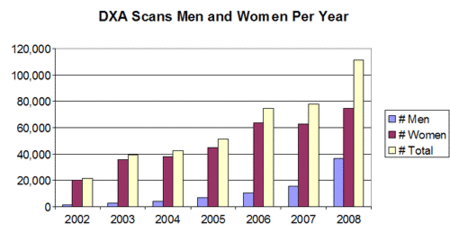Osteoporosis prevention program effective in reducing hip fracture rates
Click Here to Manage Email Alerts
If U.S. orthopedic surgeons more actively managed patients at risk for osteoporosis, they could lower the national hip fracture rate by 25%, according to investigators who assessed the effectiveness of a Kaiser Permanente osteoporosis prevention program.
“The only thing that prevents us from getting there is our willingness to try,” the study’s lead investigator, Richard M. Dell, MD, told Orthopedics Today.
He urged orthopedic surgeons to learn about screening and treatment for osteoporosis from his study recently published in The Journal of Bone and Joint Surgery and other resources.
Prevention program
|
|
In their prospective, observational study, Dell and colleagues identified a 38% drop in the hip fracture rate among 650,000 men and women older than 50 years enrolled from 2002 to 2007 in the Kaiser Permanente Southern California Healthy Bones program, an osteoporosis prevention effort. This resulted in the prevention of 970 hip fractures in 2007, according to a press release from Kaiser Permanente.
“The most important thing an orthopedic surgeon should know about osteoporosis/fracture prevention is that we can take action that helps to prevent hip and other fragility fractures,” Dell stated in the release.
Take action
“Simple steps, like suggesting calcium and vitamin D for all your patients and bone mineral density testing in patients at higher risk for osteoporosis, should be considered part of your daily practice.”
|
Source: Kaiser Permanente |
Compared with a 20% rate of post-fragility fracture treatment nationally, “Treatment after a fragility fracture at Kaiser Permanente in Southern California is now 68%,” Dell stated in the release. “Health care would be dramatically improved if this model of osteoporosis care were adapted for the rest of America.”
Utilization of osteoporosis-related screenings and medications increased dramatically during the study period. Researchers identified a 263% increase in bone density screening rates in individuals studied, with 78,262 bone density scans done in 2007 compared with 21,557 scans in 2002.
Use of anti-osteoporosis medication among the study population increased 153%.
|
|
“Within a few years, most of our medical centers were able to see a 20% to 30% reduction in the hip fracture rate,” Dell told Orthopedics Today. “I strongly believe it is possible to see similar reductions in hip fracture rates in the United States if widespread adoption of osteoporosis disease-management programs is implemented.”
For more information:Richard M. Dell, MD, can be reached in the Department of Orthopedics, Kaiser Permanente Downey Medical Center, 9353 E. Imperial Highway, Downey, CA 90242; 562-657-4125; e-mail: Richard.M.Dell@kp.org. He has no direct financial interest in any products or companies mentioned in this article.
- Reference:
Dell RM, Greene D, Anderson D, Williams K. Osteoporosis disease management: What every orthopaedic surgeon should know. J Bone Joint Surg (Am). 2009;91:79-86.



